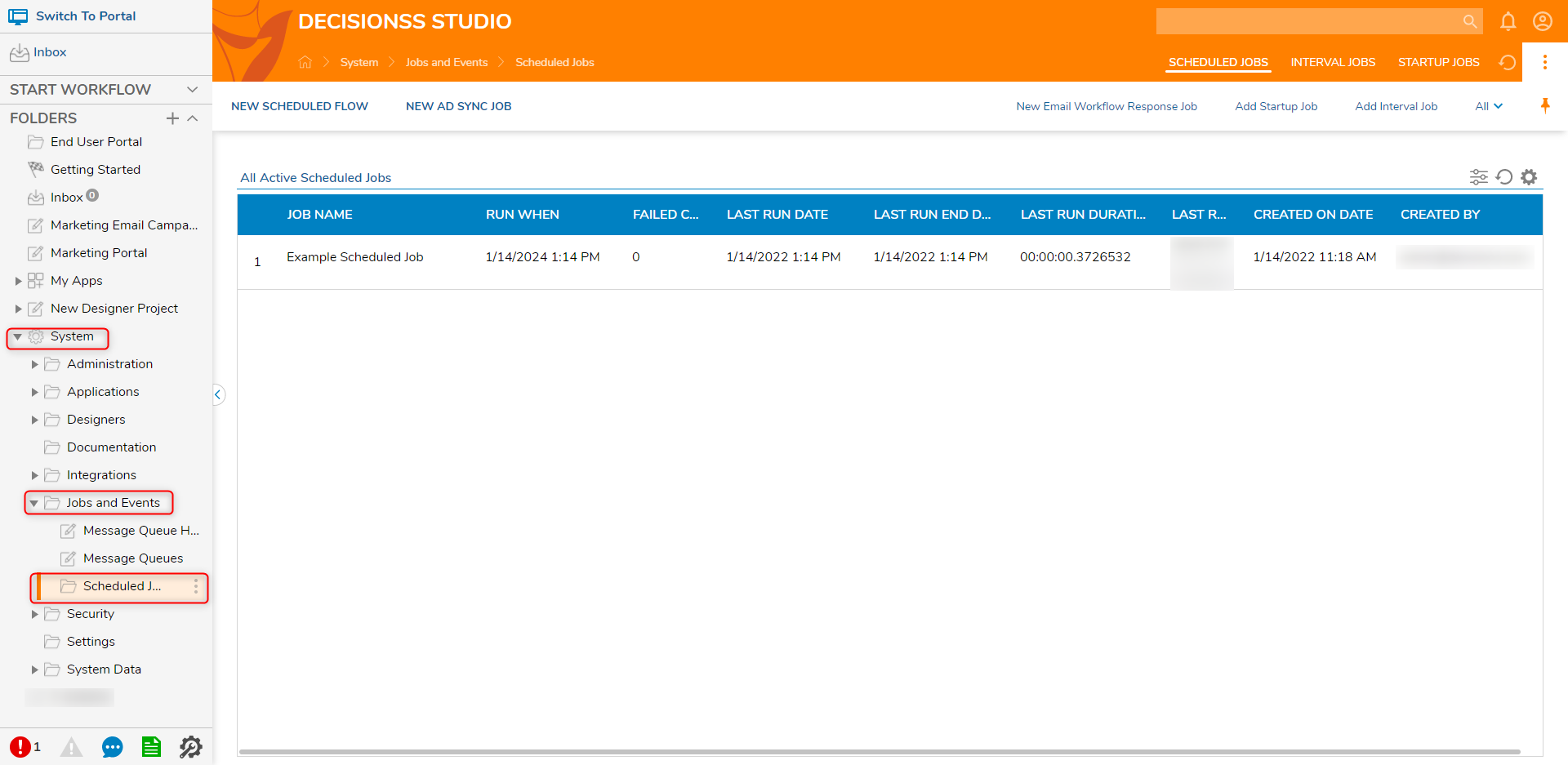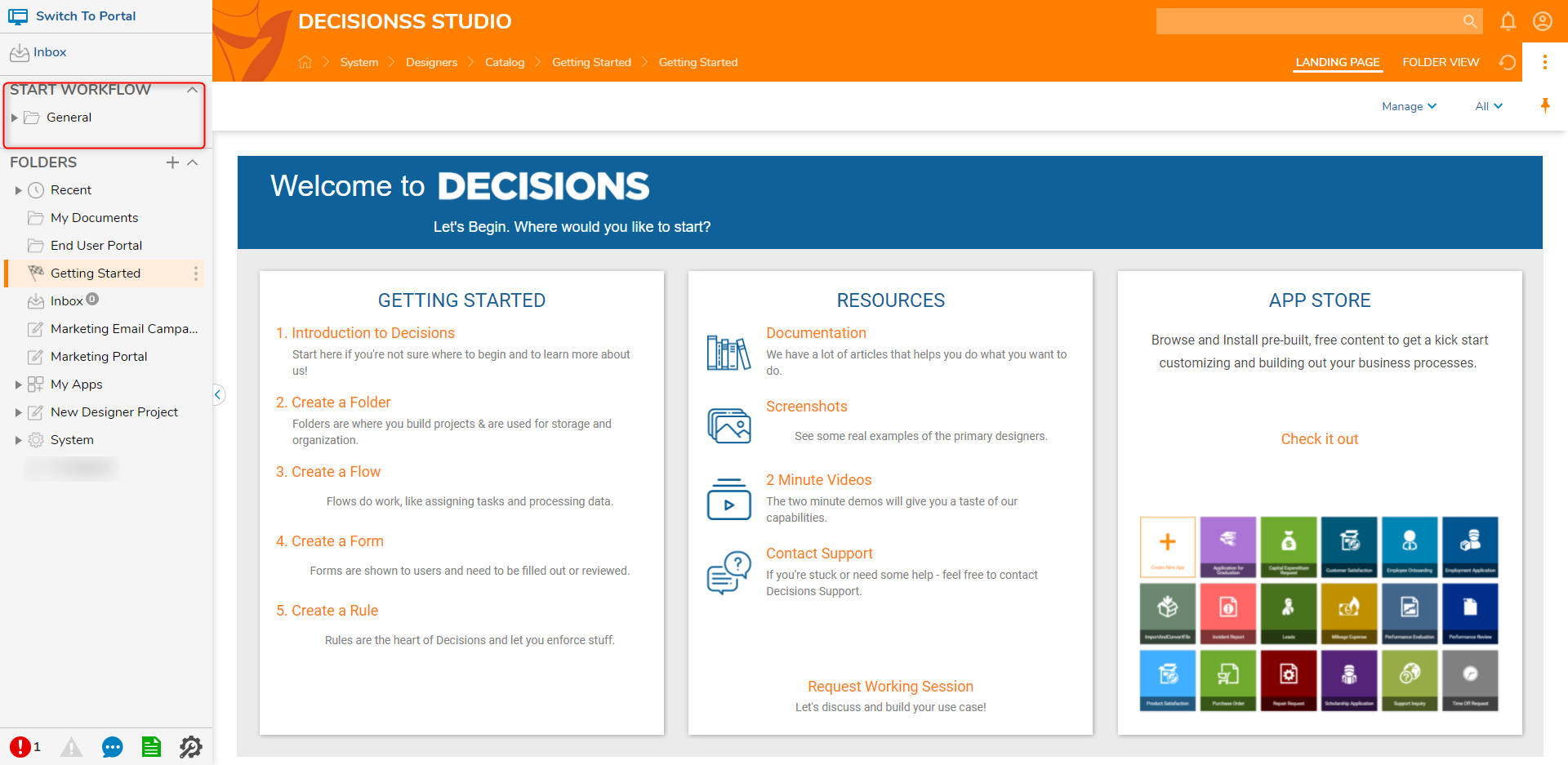Overview
When a Flow has been published, the contents of the Flow become available for an end-user to view. The available functionality of a Flow is based on what it was specifically created for. Each published Flow will have various elements that can activate it, which include scheduled jobs, a Workflow catalog, actions on a Dashboard, and from an external system via URL.
Scheduled Jobs
The Scheduled Jobs feature allows user-defined tasks (e.g., running a Flow, generating a Report, etc.) to run at a specified time and frequency. For example, a Flow can be set to run every day at midnight with a task to send out specifics as to which salesperson made the greatest number of calls or which person worked the longest amount of hours. Scheduled Jobs can be located by navigating to System > Jobs and Events > Scheduled Jobs.

Workflow Catalog
The Workflow Catalog houses designer elements for quick and easy execution based on portal permission settings. It is located in the upper left-hand corner of the Portal when content is present.

All the elements that allow a Workflow to be scheduled, published, or call data from a different system are accessible using an API call via REST Integration or SOAP.
Publish a Workflow using a Dashboard Action
When an action is added to a Dashboard, the action can publish a Workflow and gives the end-user access to the action on the Dashboard to start the published Workflow. The actions on the Dashboard respect user security, so that end users only see actions granted to them to access/view.
Call a Flow with a Form on an External System
In the same way that a Dashboard can activate a Workflow via an action, any software that Decisions integrate with can also be used to call information that may call a Rule, get data from a Report, or invoke a Flow with a Form in it. This same integration mechanism can be linked to directly invoke a Flow with a Form in it.
If a user utilizes a Flow with a Form in it, they can publish a URL on the internet, on an external website, or an event to distribute it via email. This will allow the user to interact with one of the Decisions assigned or external Forms created and hosted within a Flow. These functionalities can be used as pieces to gather or integrate data that needs to be published. These features can consume data and trigger a Flow by calling a Web Service.
With any of these elements, the ability of a user to call any element is governed by user security. Permissions are granted by an Administrator account and can be directly assigned to the user or adding the user to a group for the user to inherit the specified group's permissions.